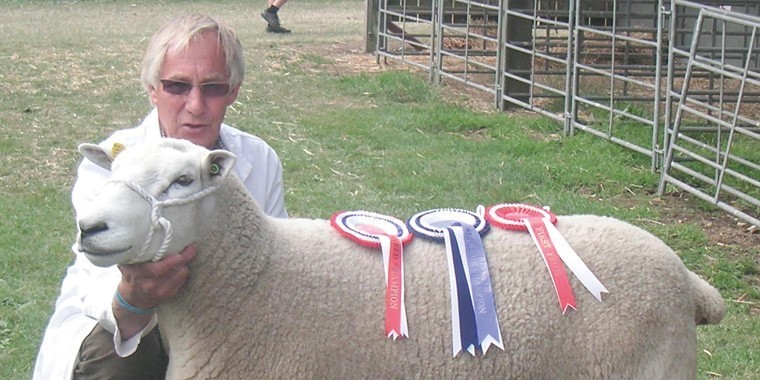Lambing always seems to be a series of milestones which help to break the operation up into nice little bite sized chunks and seem to help move the whole process along.
One of the key milestones is reaching the position where we have as many mothering pens available, mucked out, disinfected and ready to receive new occupants as we have ewes left to lamb. We have always lambed outside, but just to help in mothering up, giving lambs the best of starts and for ease of carrying out routine tasks, we have a few undercover mothering pens; ewes and lambs are walked up from the lambing paddock and penned up for 24 to 48 hours before returning to grass in a separate paddock. It’s a simple system that has served us well for more than 30 years and which, in a good season with dry and warm weather (they do happen sometimes) may only be employed for the odd ewes and lambs where there is a particular concern. Conversely, in the sort of season that we are experiencing, availability of mothering pens can be a bit of a worry. Once all the pens are full there is pressure on to turn ewes with lambs at foot back out to grass, even if weather conditions are not ideal. Reaching the point where this ceases to be an issue is always a bit of a relief.
Lambing this year has been, at the same time, both very easy and sheer hard work; very much a lambing of two halves. The ewes really have acquitted themselves very well. My ideal lambing would be one in which I do not have to provide assistance to any ewe during lambing, a goal that was almost achieved this season, with only one ewe requiring significant assistance. This was a ewe that decided to deliver a pair of twins at the same time, two noses showing and no feet, but even this was quickly resolved without a great deal of fuss. Apart from that I have had to straighten out a couple of elbow locks and no more, making it probably, from the ewe point of view, one of my easiest-ever lambing seasons.
Lamb size has really been very good, probably just about where it should be, with just a few that really did not need to be any larger; good robust lambs that have been full of get up and go from the instant that they hit the ground. The ewes, apart from a couple that have been a little slow to come to milk, have also lambed down absolutely full of milk, and this has only improved now that they are onto an abundance of good, fresh grass.
There is always a bit of a worry that grass that has grown over the winter might be a bit stale, but that has certainly not been the case this season and as a result hard feed is being cut back more rapidly than normal. In addition the lambs have responded remarkably well to the abundant milk supplies and are growing away quickly in spite of some fairly grim weather. They may look a bit grubby, but if you stand still long enough you can almost see them grow; proving the old adage that a lamb can put up with a lot of abuse (from the weather) if it has a full belly.
It will be interesting to see what eight-week lamb weights are like. I suspect they will be very good. My target each year is for every ewe to rear 60% or more of her own body weight by eight weeks. This is a useful figure when it comes to selecting flock replacements, as it is a combination of the milkiness of the ewe and the ability of her lambs to perform, with a strong focus on the former; ewe lambs out of milky ewes tend to inherit that milky trait.
The other side of the coin this season has been the weather, in particular the volume and frequency of rain, all too frequently accompanied by strong, at times storm force, winds. The rain and wind can itself present a significant risk of hypothermia in newborn lambs. Fortunately, with good strong lambs and very milky and maternal ewes, this has not been an issue for us even during the worst of nights.
It has been the impact of the rain on soil conditions that has made things most difficult. I know that we have not had to endure the floods faced by some producers in other parts of the country; in comparison we really have been lucky. With soils at field capacity, each fresh shower of rain simply has nowhere to go, which has led to puddling of paddocks (at times small lakes) and generated a great deal of mud, which really does make everything hard work. At times simply getting around has been a bit of a struggle. It has also meant the sheep need to be spread fairly thinly to avoid too much poaching, resulting in some grass not being used as effectively as it could be, but it will come again. In addition, simply turning out to do the sheep rounds in the dark, night after cold, wet and windy night, can be morale sapping and make what should be quite a simple and often-enjoyable task hard work.
What we need now is a good spell of settled weather, simply to dry things out a bit. The forecast for the next week is certainly looking rather more promising than it has been recently. I hope that we have seen the end of winter, but it is still only the middle of March. For those that have yet to lamb, good luck. I hope all your ewes perform as well as ours and wish you much better weather.




